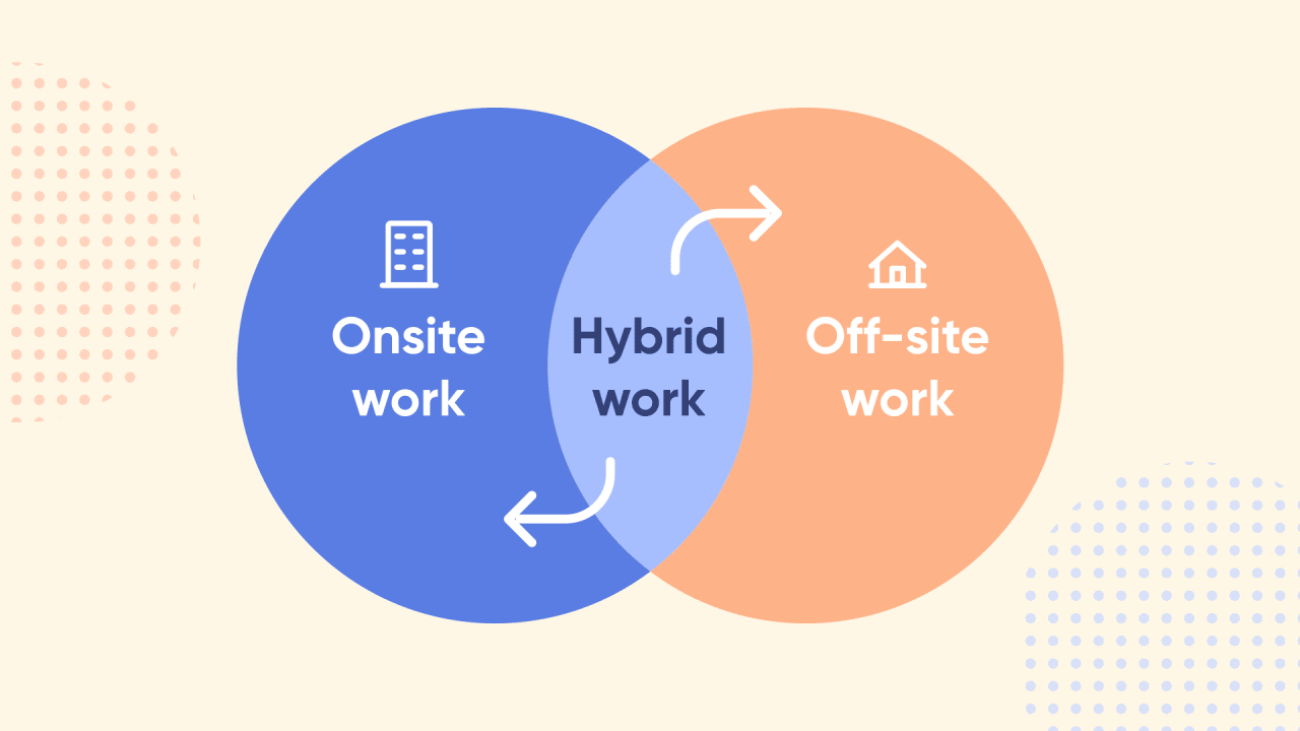Discover how businesses are thriving with the hybrid workforce revolution. Learn about challenges, benefits & future trends. Explore the best tools & practices
The Hybrid Workforce Revolution: How Businesses are Thriving with Remote and In-Office Teams
In the past decade, the global workforce has experienced a significant transformation, driven by technological advancements and evolving employee expectations. The rise of remote work, accelerated by the events of 2020, paved the way for what is now known as the hybrid workforce revolution. Companies worldwide are adopting a more flexible approach to work, combining remote and in-office teams to maximise productivity and employee satisfaction. In this article, we will delve into the concept of the hybrid workforce, explore its challenges and benefits, analyse a hybrid workforce report, discuss the future of remote work in 2023, and provide employers with work-from-home best practices.
Without further ado, let’s get into some basics first!
Understanding the Hybrid Workforce Revolution
The hybrid workforce revolution refers to a work model where organisations seamlessly integrate both remote and in-office teams to achieve their goals. This approach acknowledges that not all tasks require a physical presence in the office and allows employees the flexibility to choose the best environment for their productivity. By combining the best aspects of remote work and traditional office setups, businesses can unlock new opportunities for growth and adaptability.
Challenges in Embracing the Hybrid Workforce Model
While the hybrid workforce model offers numerous advantages, it also presents challenges that businesses must address to ensure its success. Communication and collaboration can become more complex with team members dispersed across different locations and time zones. Additionally, maintaining a cohesive company culture and fostering team spirit may be more difficult when employees spend varying amounts of time in the office. Employers must proactively address these challenges to create a harmonious and productive work environment.
The Hybrid Workforce Report: Insights and Data
A recent hybrid workforce report analyzed the impact of the new work model on businesses. According to the report, companies that embraced the hybrid approach experienced increased productivity and employee satisfaction. Flexibility in work arrangements led to higher retention rates, as employees felt more empowered to balance their personal and professional lives effectively. Moreover, the report highlighted that businesses offering remote work options attracted a larger pool of skilled talent, enabling them to stay competitive in the job market.
Transitioning to a Hybrid Workforce: Remote Working Technology Tools
To facilitate a smooth transition to the hybrid workforce model, businesses must leverage advanced remote working technology tools. These tools play a crucial role in enhancing communication, collaboration, and project management. Video conferencing platforms, instant messaging applications, and cloud-based collaboration tools are essential components of the modern hybrid workplace. They ensure that teams remain connected regardless of their physical locations and streamline workflow processes. Ever since COVID hit, tools that complemented remote work, like Zoom, Microsoft Teams, Slack, and even Google Workspace have been really appreciated for the immense convenience they offer!

Future of Remote Work in 2023
As we look ahead to the future of remote work in 2023, several trends and predictions are emerging. One significant shift is the increased focus on employee well-being and mental health. Employers are realising the importance of supporting their remote and hybrid workforce in maintaining a healthy work-life balance. To achieve this, companies are exploring creative ways to foster social interactions among employees and combat isolation, such as virtual team-building activities and online wellness programs.
Furthermore, advancements in technology are anticipated to revolutionise remote work even further. Augmented reality (AR) and virtual reality (VR) technologies may play a more prominent role in facilitating virtual collaboration and immersive training experiences. Additionally, artificial intelligence (AI)-driven tools could enhance remote team management, automate repetitive tasks, and provide valuable insights into employee performance and engagement.
Work from Home Best Practices for Employers
To make the hybrid workforce model successful, employers must implement effective work-from-home best practices. Here are some valuable tips:
- Set Clear Expectations: Clearly define roles, responsibilities, and performance metrics to ensure that remote and in-office employees are on the same page regarding their tasks and deliverables.
- Promote Open Communication: Encourage regular communication channels, such as team meetings and one-on-one check-ins, to maintain transparency and foster a sense of belonging.
- Provide Technology Training: Offer comprehensive training on remote working tools to ensure that employees can utilise technology efficiently and effectively.
- Flexibility and Empathy: Acknowledge the unique challenges of remote work and be empathetic to employees’ personal circumstances. Flexibility in work hours and deadlines can go a long way in promoting a healthy work-life balance.
- Invest in Cybersecurity: Strengthen your organisation’s cybersecurity measures to protect sensitive data and maintain a secure remote work environment.
- Measure and Improve Productivity: Implement performance tracking mechanisms to assess employee productivity and identify areas for improvement.
Conclusion
The hybrid workforce revolution marks a significant shift in the world of work, empowering employees to enjoy the benefits of both remote and in-office environments. Businesses that embrace this transformative approach can reap the rewards of increased productivity, employee satisfaction, and access to a diverse talent pool. However, navigating the challenges of the hybrid model requires strategic planning, advanced remote working technology tools, and a commitment to fostering a positive work culture.
As we look ahead to the future of remote work in 2023, it is evident that technology will continue to play a pivotal role in shaping the way we work. Employers must embrace innovative solutions and prioritise employee well-being to remain competitive in the dynamic and evolving landscape of the modern workforce. By adopting work-from-home best practices, organisations can thrive in the hybrid workforce era and create a more sustainable and successful future for all.


Add a Comment